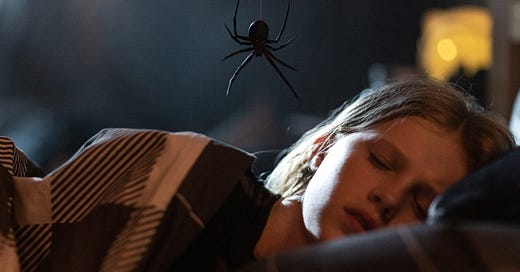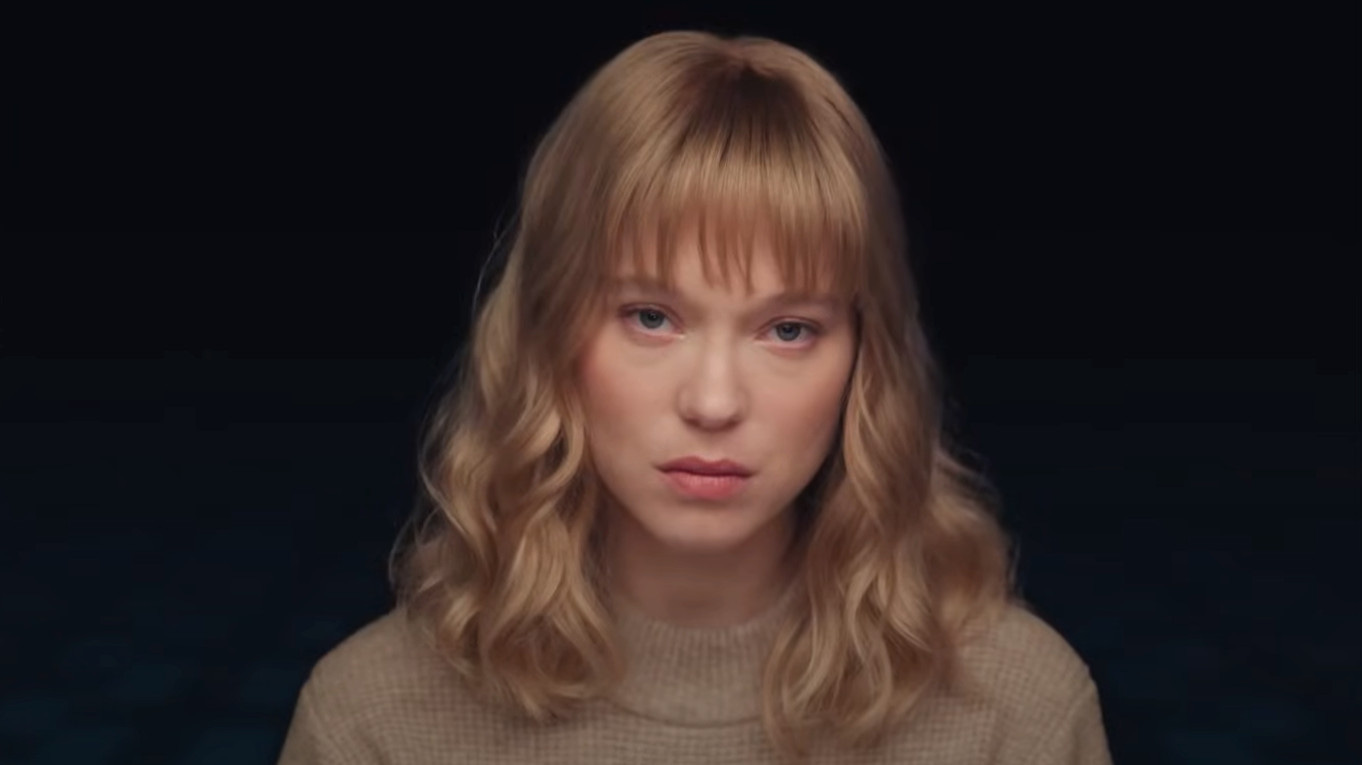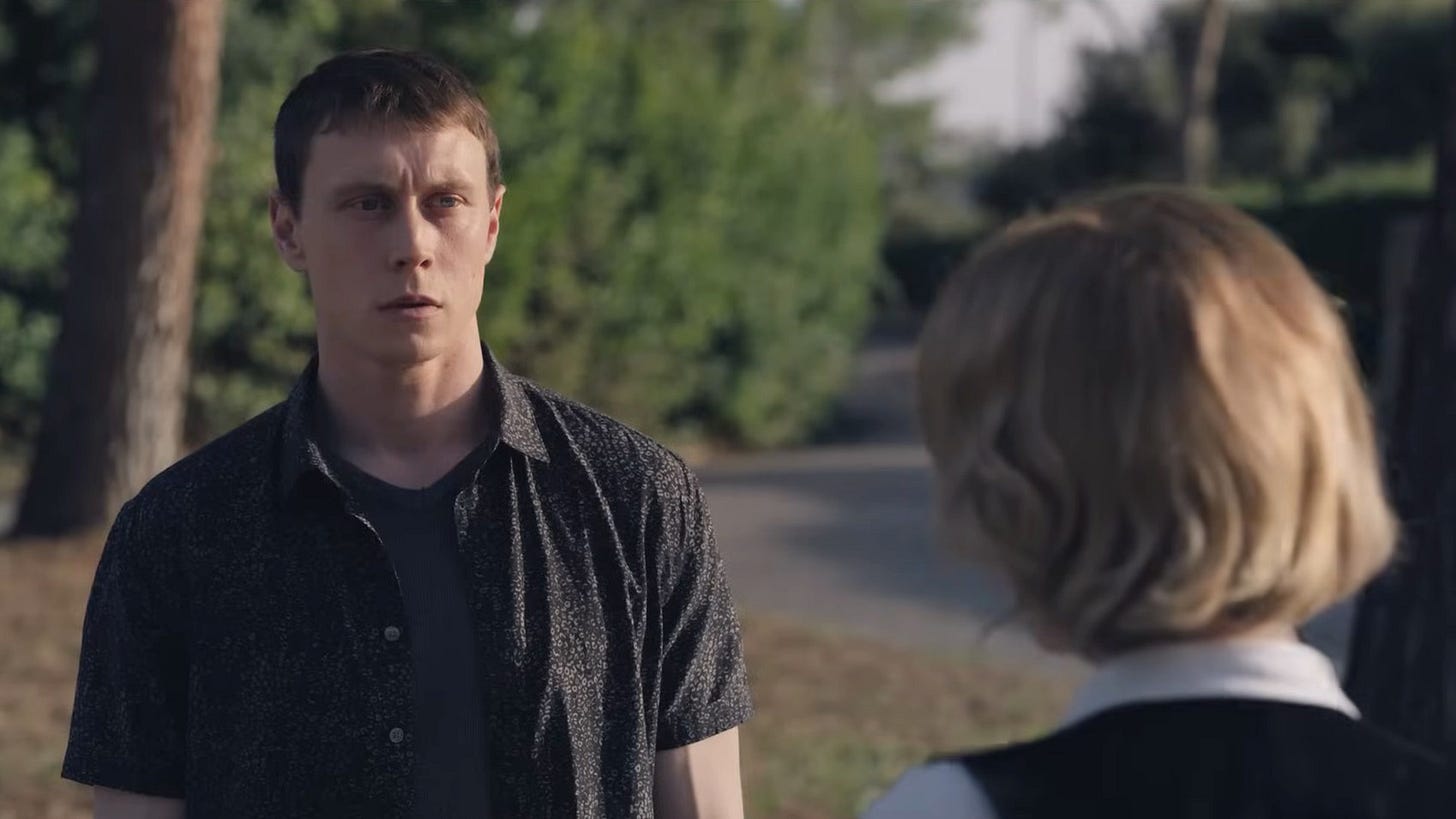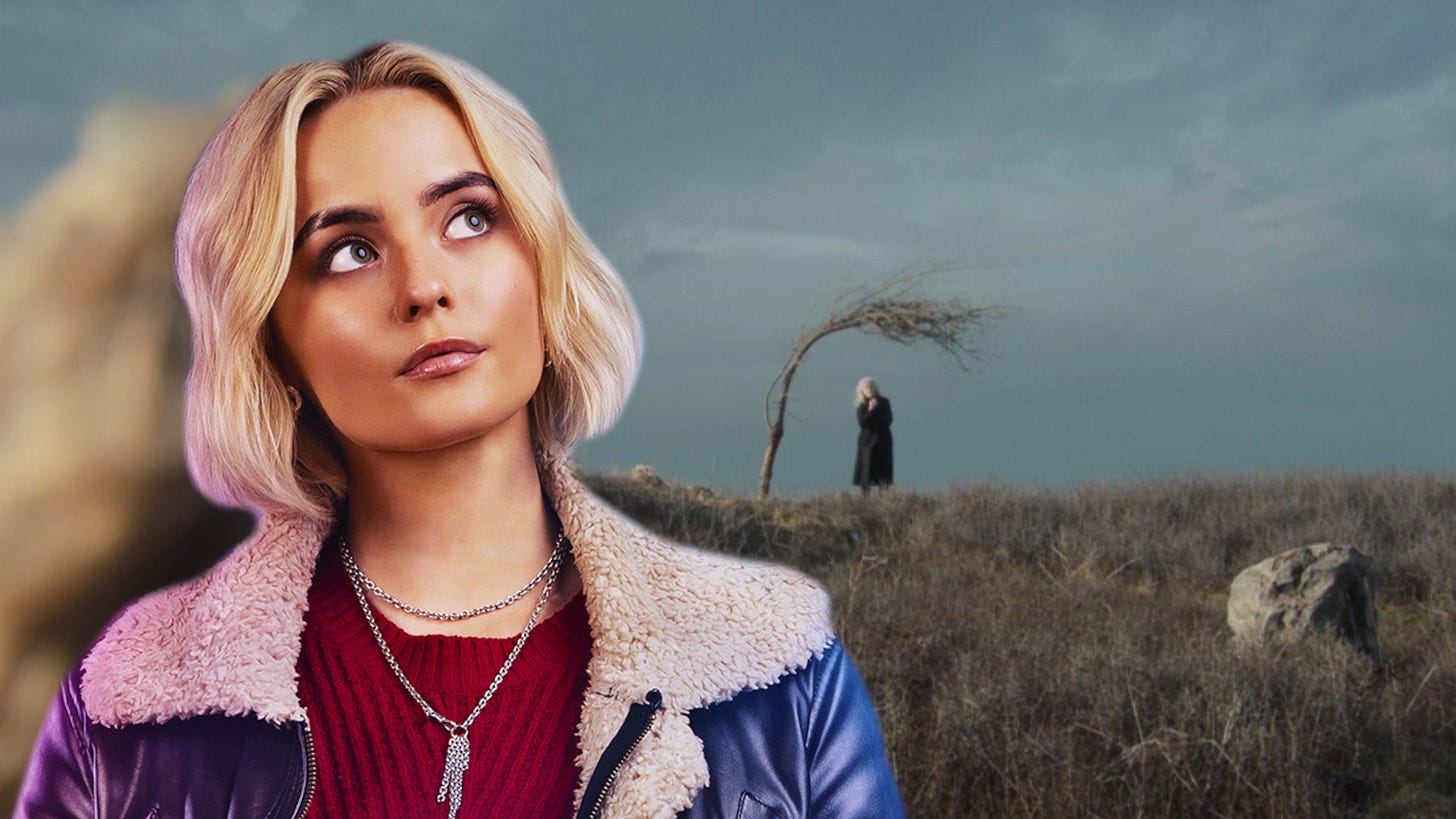Eight legs, zero scares
Aussie horror Sting is actually probably an antidote to arachnophobia. Elsewhere, a salute to the best Potter film and a review of The Beast.
The big release of the week in UK cinemas is the spider horror movie Sting, but that’s rubbish so we’re gonna talk about something good first. It’s my Substack, and I’ll dance if I want to.
Back to the future… and the past
Sometimes you go into a film wanting to know exactly what it’s about. It’s comforting and it helps to crystallise your expectations. However, there’s sometimes a joy in going in with very little knowledge of what’s to come, allowing an ambitious filmmaker to pick you up and rotate you at increasing speed until you either vomit explosively or erupt with gleeful laughter. I was inclined to do both while watching Bertrand Bonello’s head-spinning science fiction epic The Beast.
Bonello’s tale takes place across at least three time periods, spanning more than a century and united by the presence of Gabrielle (Léa Seydoux) and Louis (George MacKay, speaking what sounded to me like credible French). Early on, in scenes set in the near-future, we learn that Gabrielle is undergoing a process of journeying through her past lives in order to purify her emotions and compete for jobs with the now-dominant AI systems. Other reviews have been more explicit with plot details, but I’m staying vague here in the hope that you might enjoy the surprises as much as I did.
Anyone who appreciated the tender storytelling of Celine Song’s heart-breaking Past Lives last year will detect the presence of “inyeon” in the way Gabrielle and Louis intertwine throughout history. She confides in him her constant fear that some unknown catastrophe — the beast of the title — is going to befall her, but she seems willing to lean into the flames nonetheless.
The two lead performances are deliciously inscrutable, with Seydoux in particular transforming wholesale (not physically, but in terms of personality) between the different iterations of her existence. Bonello’s script gives her a lot to do in terms of modulating herself to convey a woman who’s vaguely aware something’s wrong — we get the uncanny strains of Bonello’s score, composed with his daughter Anna, to help us out — but not aware enough to realise she’s in the midst of hopping through her own life and peeking into her various pasts.
MacKay also showcases real range here, appearing as both a smooth-talking member of high society and an unsettling figure ripped from very chilling, recent headlines in the strongest and most gripping segment. But even in his less overtly malevolent guises, there’s something dangerous about him — the hot guy whose so obviously beautiful that he simply cannot be anything other than a walking red flag. It’s another great choice in MacKay’s run of fascinating projects with a social conscience, alongside the likes of I Came By and Femme.
The Beast never feels as if it has to amp up the pacing or lean heavily into its central genre — the most explicitly sci-fi construct is a vat of black goo and a lifelike AI companion played by Guslagie Malanda. It skips merrily from period romance to disaster movie to neo-noir thriller with methodical elegance, seeding lines of dialogue and arresting images that recur throughout time and space in a way that eventually forms an enigmatic picture.
But that enigma is maintained in ways that always ensure the audience is off-balance. Each period setting comes with a few bizarre anachronisms — internet pop-ups were long gone by 2014 — to make clear that this version of the past is very much subjective and entirely changeable. These eras are sliding and shunting into each other, as if becoming the hail of distorted pixels that signifies the film’s title card.
Visually, the future scenes lean heavily on the brutalist architecture beloved of Ballard and the satirical horror of the early 1970s. This filmmaker has no doubt consumed a healthy diet of David Cronenberg’s earliest works, in which the director’s thematic vision unfortunately far exceeded the budget he had in place. Bonello, thankfully, is more able to follow through on the spectacle and scale of that storytelling than Cronenberg was in the likes of Stereo and the original Crimes of the Future.
And that storytelling has plenty to say. Bonello is critical of AI, of course, but his dystopian vision of filmmaking as Seydoux merely standing in the middle of an entirely green room pretending to be hit by a car doesn’t bear thinking about. The Beast’s overriding effect may be of an elliptical sci-fi journey, but it has a knack for delivering sobering and entirely plausible predictions for our imminent future.
Like much of the best sci-fi, The Beast dares you to try to understand the narrative lurking beneath each of its storytelling stones. It’s a big, shaggy-dog story about history, past lives, and the romance of pursuing something even when you feel it might destroy you. Nothing says “inyeon” more than that.
The Beast is in UK cinemas now. Find a screening near you here.
Azkaban is the most important Harry Potter movie, not just the best
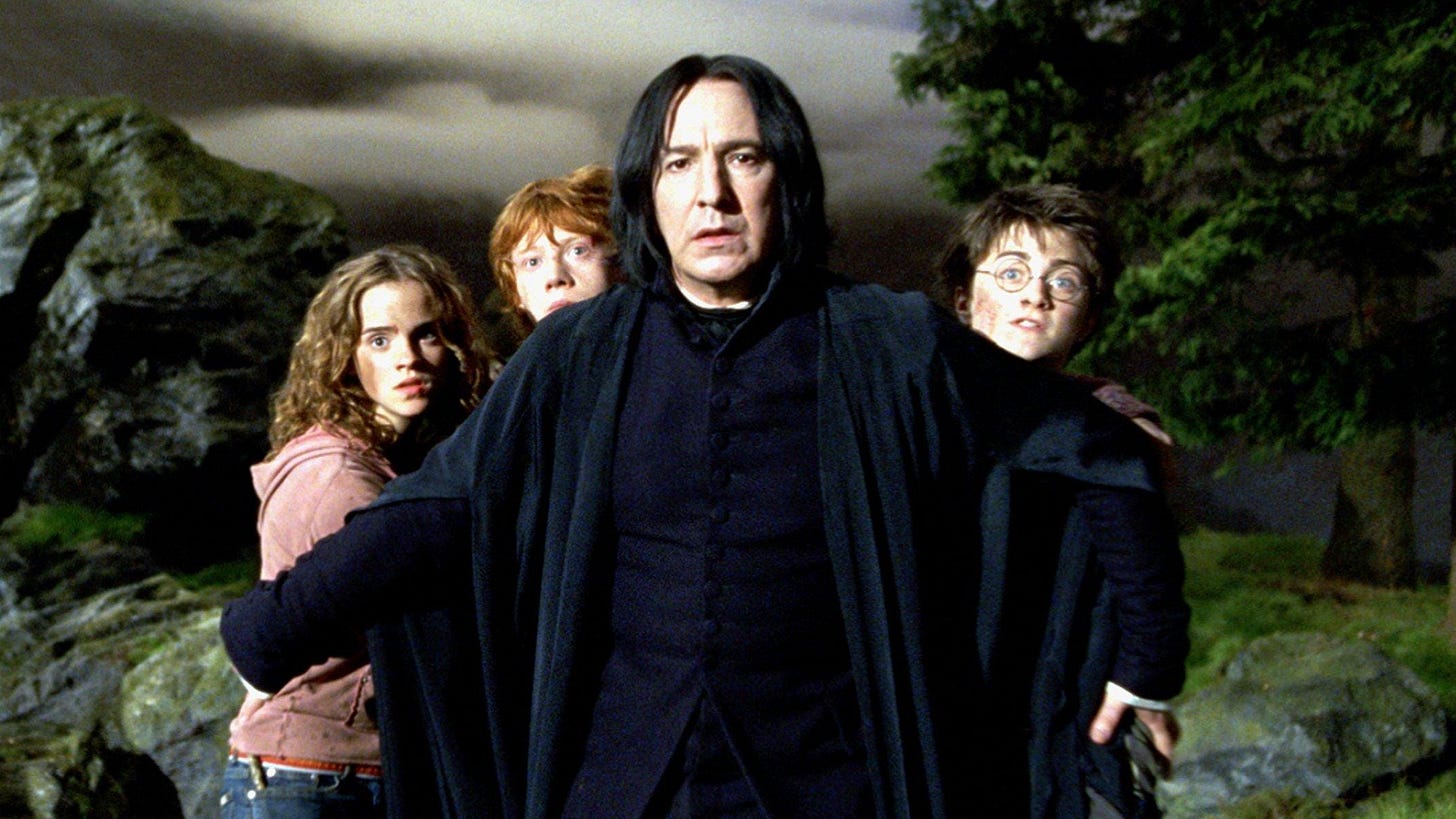
It’s pretty much a closed debate at this point that Harry Potter and the Prisoner of Azkaban is the best Potter movie. And that debate isn’t just closed because JK Rowling’s hideous views about transgender people have tarnished the Potter brand enormously. It’s closed because Azkaban is an absolute banger of a film. But it’s also the most important movie in the franchise’s history.
Mexican filmmaker Alfonso Cuarón famously had to take an angry phone call from buddy Guillermo del Toro before he agreed to direct the third Potter adventure. The seasoned family movie veteran Chris Columbus had done an admirable job with the first two, but he couldn’t stand the schedule any more and — either way — his brightly-lit atmosphere of magical wonder didn’t stack up with where the franchise was going. Cuarón was persuaded to say yes and he immediately set about changing the game.
Prisoner of Azkaban is a bit of a liminal entry in the Potter canon. It’s the only story not to feature any manifestation of Voldemort, but that doesn’t stop it marking a world of enhanced stakes and heightened maturity. The characters are teenagers now, and that was reflected in the big screen adaptation.
Cuarón’s movie eschews the Hogwarts robes of the first two movies for an impressive arsenal of knitwear and, thanks to Michael Seresin’s atmospheric cinematography, it exists in a world of foreboding. The characters don’t know about the horrors to come, but the audience does and so the film gives us a visual language laced with dramatic irony.
Any idea of the Potter movies as joyful escapism disappears entirely with Prisoner of Azkaban and it’s easy to forget how brave it was at the time for the third movie in a family franchise to make such an abrupt handbrake turn into darkness. It’s a loss of innocence movie that starts bleak and just gets bleaker.
The major cast refresh helps too. It’s tough to imagine that avuncular, twinkly Richard Harris version of Dumbledore becoming what Michael Gambon was asked to become, for starters. Then there’s Gary Oldman’s wild-eyed turn as Sirius Black, Remus Lupin as the mousey, mysterious Lupin, and Timothy Spall embodying every rodent-like aspect of Peter Pettigrew.
Every Potter film from this point forward took its visual lead from what Cuarón did when he made Azkaban. He said farewell to the series after this one movie, but he left his stunning footprints on the franchise for good.
Harry Potter and the Prisoner of Azkaban is in UK cinemas to mark its 20th anniversary and you can also stream it on Netflix.
Arachnophobic? You’re probably safe with Sting
Lots of people are pretty scared of spiders. It’s, in fact, probably one of the most universal fears out there. No wonder movies about terrifying, killer spiders have a rich history. Yes, there are modern cult classics like Arachnophobia and Eight-Legged Freaks, but you can look all the way back to Tarantula and Earth vs. the Spider in the 1950s for examples of the genre. And nowhere has as many deadly spiders as Australia, so you’d expect an Aussie spider horror like Sting to be the ultimate slam-dunk.
Well, for starters, writer-director Kiah Roache-Turner has chosen to set the story not Down Under, but in an anonymous New York City tower block. A spider-like creature emerges from an egg that recently fell from the sky, where solitary tween girl Charlotte (Alyla Browne, fresh from Furiosa) begins to care for it, keeping her eight-legged bud a secret from her comic artist stepdad Ethan (Ryan Corr). Of course, it soon grows beyond normal size and starts seeking out prey bigger than the cockroaches offered by Charlotte.
Unfortunately, none of this is remotely exciting. We’re told lots of foreboding things about spiders (“they only know two things — eat and kill”) as if that bears any relevance to an alien creature that isn’t really a spider at all. In fact, there’s no acknowledgement beyond its size that this critter is any different to the sort of thing you’d escort outside with a pint glass and a takeaway menu.
Roache-Turner fails to get any tension out of the grimy interiors of the tower block, paling in comparison to the peephole jump scares and cheese grater set pieces of last year’s Evil Dead Rise. The setting never gives us anything material, but it does ensure there’s never even a flicker of visual intrigue. Everything’s the same mixture of grey and brown.
The movie crawls through its first half in an attempt at a slow-build, only to completely floor the accelerator at the midpoint for Ryan Corr to Hulk-punch a TV screen for no reason. At the same sort of time, the spider decides it’s bored of crawling through the building’s ducts in predatory silence and instead starts hurling itself at people like a sumo wrestler off their face on Jagerbombs.
This movie definitely gives spiders a bad name, but not for the reasons you might expect. They’re so much more interesting than this.
Sting is in UK cinemas now.
Doctor Who just did a folk horror masterpiece
73 Yards is what would happen if Mark Jenkin made a Doctor Who episode. I found myself thinking a lot about his double-header of Cornish gems — Bait and Enys Men — while watching Russell T Davies’ love letter to the folk horror genre, directed brilliantly by Dylan Holmes Williams. The man behind the camera has plenty of horror experience, having made spooky short films and several episodes of M Night Shyamalan’s Apple TV+ series Servant.
It’s a brand of episode we haven’t seen for a decade — the Doctor-lite story. In this case, the Time Lord (Ncuti Gatwa) disappeared after breaking the fragile exterior of a fairy circle on a Welsh hilltop, leaving Ruby (Millie Gibson) to fend for herself. She soon noticed she was being followed by a wraith-like woman who was always 73 yards away. Whenever Ruby sent someone to confront her, the woman told them something that made them run away from Ruby forever — including her own foster mother.
The idea of the woman who never approached but was always watching is a dynamite horror device, with the uncanny soundscape and inscrutable swaying movements making her an instantly iconic foe. But 73 Yards also did something that Doctor Who is often very reluctant to do — it left things wide open.
As a sci-fi show, Doctor Who in the modern era has often prided itself on labyrinthine plots that click together in a neat bow. We’ve had eras of tedious sonic screwdriver waving and whatever the heck Steven Moffat was doing with his head-scratching time travel mechanics, but this is an embrace of fantasy and horror’s potential for enigma that feels entirely new.
In the second 60th anniversary special, Wild Blue Yonder, David Tennant’s Doctor utilised a cheap trick involving a line of salt to ward off powerful beings at the edge of the universe. When that line broke, it made him feel uneasy, as if he’d let some sort of force cross over. Given how much fantasy has intruded into the Whoniverse since, it’s clear that all bets are off now.
73 Yards is available on BBC iPlayer in the UK, along with the rest of Doctor Who.
Trailer of the Week: Wolfs
In an age often referred to as representing the death of the movie star, it’s wonderful to see a thriller built almost entirely upon the shared leading man charisma of Brad Pitt and George Clooney. Wolfs sees them play duelling underworld “clean-up” men who must work together when a job becomes far more complicated than it seemed to be.
Spider-Man director Jon Watts has written and directed it and the trailer goes heavy on the sparky banter and electricity between the two stars. This could be a lot of fun indeed.
Wolfs will be released into UK cinemas on 20th September.
Next week: The Bad Boys are back, long after anyone could come close to caring about them. Let’s cross our fingers for some fun action.

